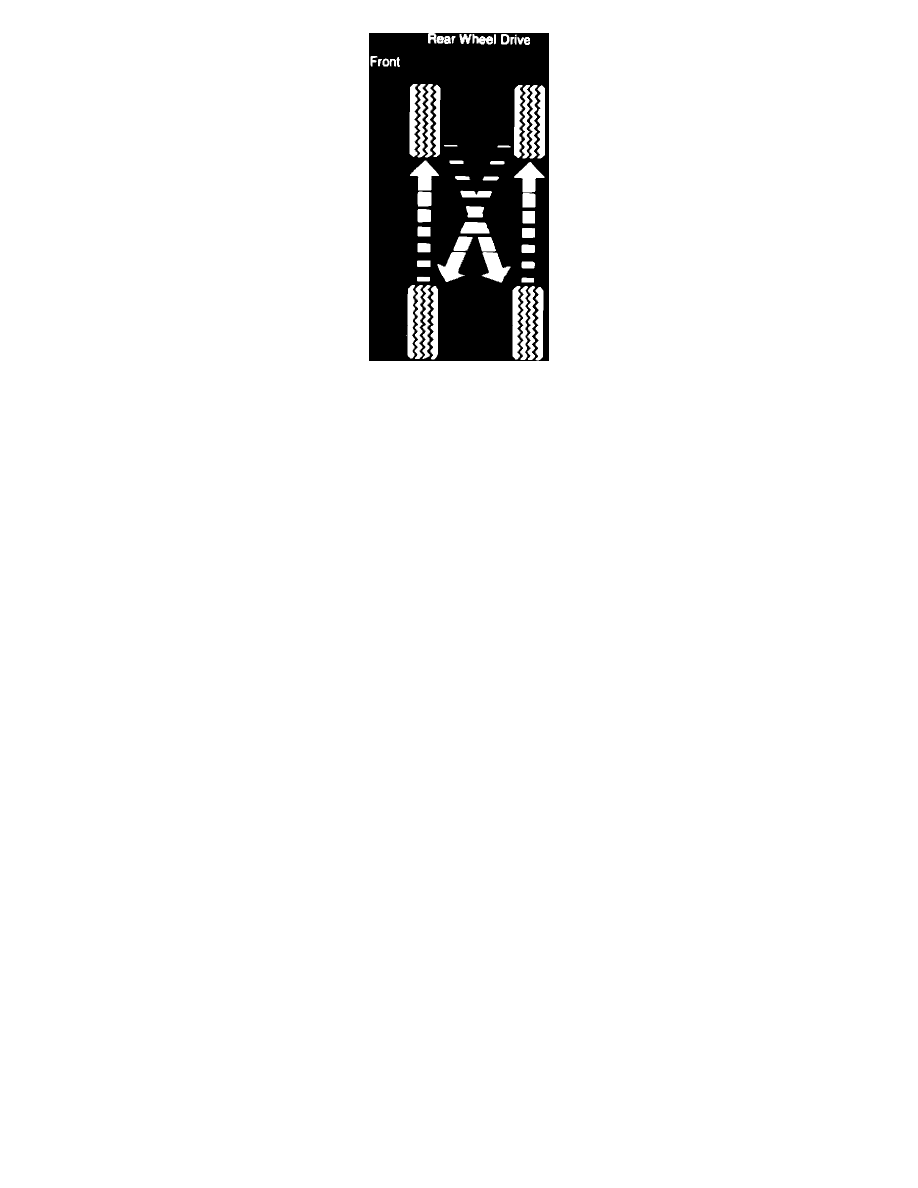K 30 P/U 4WD V6-262 4.3L (1985)

Rear Wheel Drive
Small amounts of heel/toe wear on the outer tread is considered normal. This wear is characteristic of new tires at full tread depth on free-rolling axles.
Turning and cornering exaggerates front tire wear. Routine tire rotation at 7,500 miles using the modified 'X' method* as shown in the Owners Manual
will minimize the wear. Such tires can be expected to give optimum performance for their full intended life.
If this type of wear becomes excessive and/or results in a customer inquiry, the following procedure should be followed:
1)
Rotate tires using the modified 'X' pattern* shown. This allows the front tires to rotate in the opposite direction on the rear of the vehicle
which will tend to even out any irregular wear quicker. It also allows all four tires to eventually run on all four positions. Tire noise may
continue after rotation, but should gradually lessen after a few thousand miles.
2)
Measure front alignment. The single most contributing cause of premature tire wear, except for abusive driving, is excessive toe. For best tire
wear, reset toe as close to zero as the specification allows. In most cases, this will be .1~ total toe or less. Camber and caster should also be
set to specification if necessary.
3)
Talk to the customer about his/her tires. Explain that some amount of shoulder wear on front tires is normal and will even out with regular tire
rotation. Explain that front tire shoulder wear is also exagger-
ated by hard cornering. Stress the importance of proper inflation pressure and alignment.
4.
If the wear has advanced far enough, tire replacement may become necessary. When installing new tires, match the tire's high point mark to the
wheel's valve and then balance. Also, alignment must be reset as specified in Step 2 above and the customer instructed to follow the modified 'X'
rotation schedule at 7,500 miles.
*The modified 'X' rotation pattern does not apply to some models, such as Corvettes, Camaros, and Firebirds equipped with directional tires and/or
special wheels.
Technical Service Bulletin # 883795
Date: 881201
Brakes - Pull While Braking
Number:
88-379-5
Section:
5
Date:
DEC., 1988
Subject:
LEAD WHILE BRAKING
Model and Year:
1984-86 K 1-2 1987-88 V 1-2
TO:
ALL CHEVROLET DEALERS
A condition described as directional lead (either right or left) while braking may be addressed on the models listed above by careful inspection,
adjustment or repair of the vehicle's tires, suspension, steering or brake components.
The following procedures have been developed to systematically address the area(s) that should be inspected and adjusted.
Evaluation of a vehicle's brake performance is not intended to be made with the vehicle operator's hands removed from the steering wheel. Vehicles that
exhibit directional bias under these conditions are not considered to exhibit brake lead.
Before road testing the vehicle, perform the following services:
